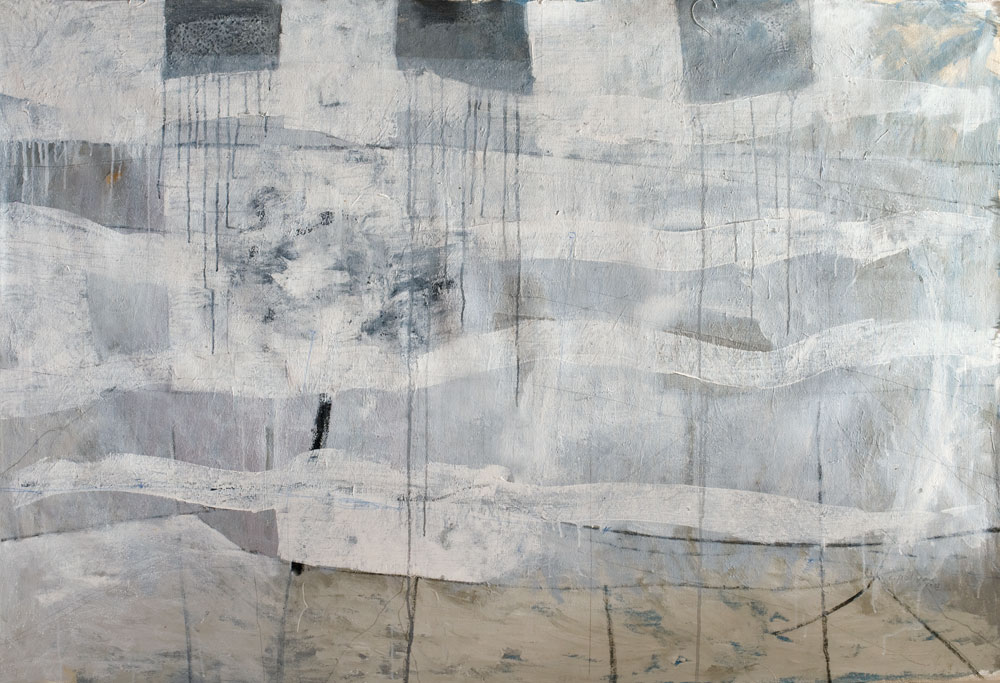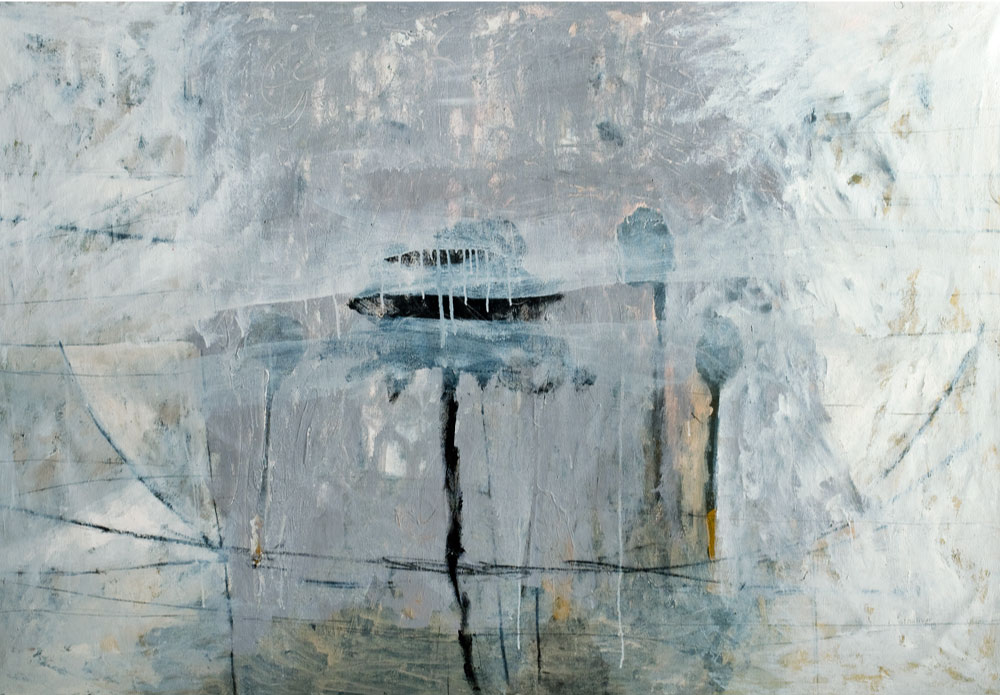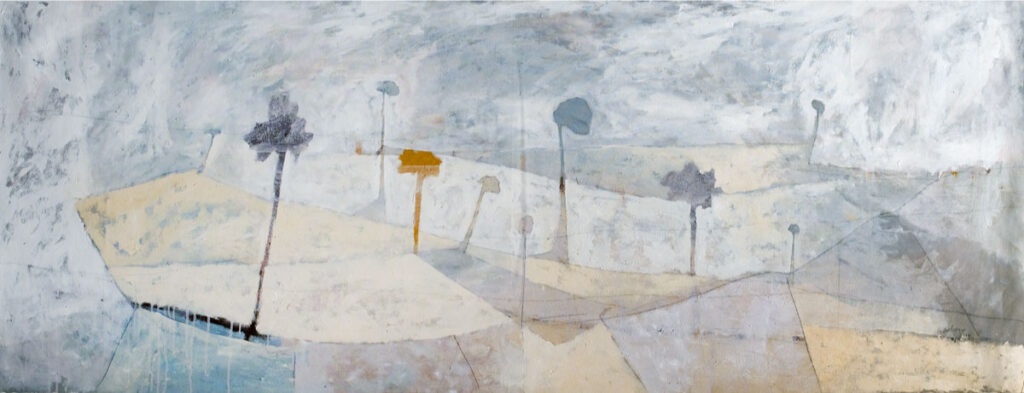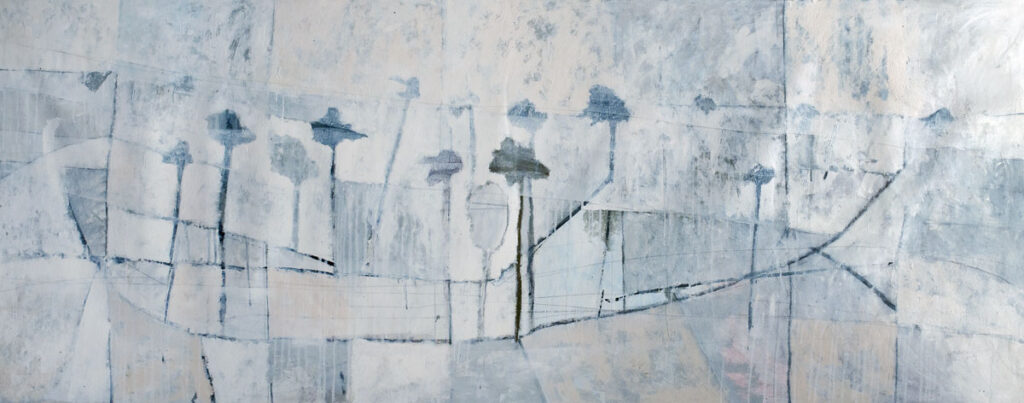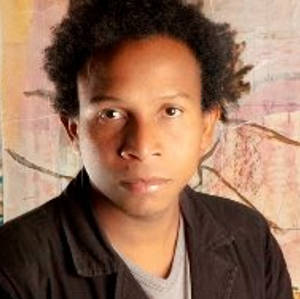
Through painting, I recreate the landscape of my mind; utilizing lines and graphisms, atmospheres and symbols which allow me to present an imagery impregnated with remembrances.
Juan González Bolívar
Caracas – Venezuela.
About Juan González Bolívar
Born in Cupira-Miranda, Venezuela in 1978.
His childhood and adolescence took place in Maturín, Monagas, where he graduated from the Eloy Palacios Art School in 1998 obtaining an Associate Degree in Fine Arts. He moved to Caracas to continue his studies at the Instituto Universitario de Estudios Superiores de Artes Plásticas Armando Reverón (IUESAPAR), where he graduated in 2004. Since then, he has been very active in the national and international art scene, exhibiting and participating in a variety of exhibitions and fairs in Venezuela and abroad.
His work responds to the artist’s lifelong investigation of the representation of landscapes. Juan González Bolívar creates spaces distinguished by their luminosity and the subtle suggestion of shapes and figures. As his landscapes are more a representation of psychological rather than physical spaces, they are highly introspective, and result from evocations and memories of his own experience. He combines painting and collage to create foggy but bright environments almost devoid of narrative implications.
Click below to download full CV

Reviews
Peran Ermini.
Throughout Juan González Bolívar’s process of depuration and synthesis, he has divested his painting of any descriptive and narrative character, as well as despoiled all the pictorial elements which seemed superfluous and ornamental; his works have become increasingly more ideal and minimalistic, to the point where their representative function is reduced and they cease to be landscaping to become almost conceptual, as ideal or ideographic settings, without losing the sensorial, affective and emotive contents manifested in subtle transparencies and textures amid a white, atmospheric and enveloping background.
Alberto Asprino.
Juan González Bolívar is one of the country’s young artistic figures who keep a discrete privacy characterized by his desire to protect and not to pollute each step generated by the growth of his aesthetic inquiry. A singular quest which has been developing in our capital city for about ten years, allowing him to thrust a significant presence in our national pictorial stage.
His work is definitely focused on the existential experiences he has been treasuring as memories of his rural background in La Cruz de La Paloma, a small village near Maturín, in the state of Monagas. A setting which, despite all the changes and the disproportionate development he has been experiencing, has been kept “frozen in time” by González Bolívar, keeping alive a way of life which gratifies and consolidates him as a creator.
He is the one who has been watching the landscape from a different window, with the perspective of memory and a nostalgic approach. A rather “psychological” territory sought through the representations of nature configured by trees, clouds and the sun, the emotional architecture of his own inner self.
Trees like spots sketched without touching the deep ground, levitating in the air. Spots hiding his early brushstrokes to blur the weight of volume, to reveal ethereal, weightless gestures, deeply felt and lived.
Susana Benko.
Juan González Bolívar carries out landscapes without having to go out and paint in a given place. Landscape dwells in his interior. Behind are the memories of what once were rainy days in La Cruz de la Paloma, his native village in the state of Monagas, or the trees and mountains of Tibroncito, where he currently lives. He needs not to go out. He evokes, transfigures and paints possible echoes of his memory. He inquires into the materials he uses as support as well as into collages, contrasting raw textiles with sumptuous ones which often yield the precarious appearance distinctive to his work. Thus he paints—and draws—forms and atmospheres, trees and houses, with the perennial presence of the incident light.




